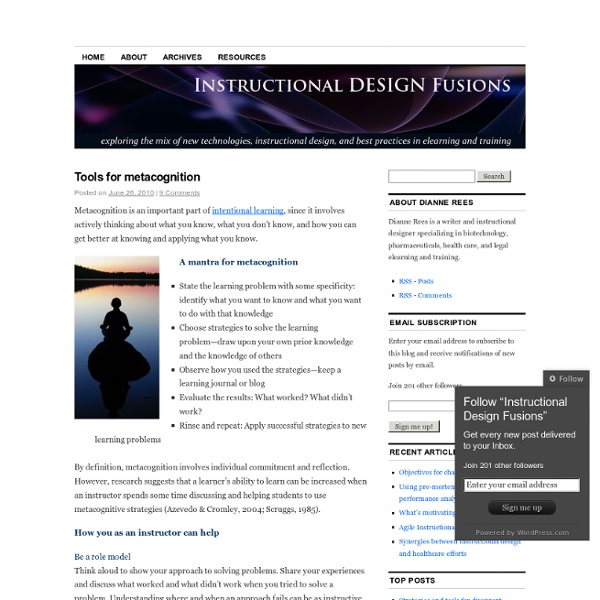



EnhancED | Enhancing Education The (Ongoing) Case for Google Drive Microsoft’s Office is the most-used office productivity suite in the world. Redmond claims that one-in-seven humans currently uses the suite. The software is complex; Word itself boasts nearly 1,200 menu items according to an intrepid Google Forum user, Pat... Flipping the Biochemistry Classroom: Making Room for Real-World Problem Solving Columbia University Professor Brent Stockwell came to the Columbia Center for New Media Teaching and Learning (CCNMTL) in the summer of 2013, wanting to talk about his biochemistry course, and what could be done to improve it. EdX: The First Year Working Papers Released Researchers from Harvard and MIT have sifted through data from 17 edX courses to produce a series of working papers on the first year of open online courses. Mozilla's Web Literacy Standard and Its Implications for Educational Technology Wikispaces Adds Quizlet and GeoGebra Widgets for Improved Student Engagement
ID - Instructional Design or Interactivity Design in an interconnected world? Instructional design is not only seen as a core competency for learning and development/training specialists, but it’s a huge industry, too. Most learning vendors tout their ‘expertise in instructional design’ as a key reason as to why we should engage them to produce learning content. If we do so, then almost invariably their approach is around developing content in an ‘instructionally-sound way’ to produce a set of ‘learning interventions’. I have a real problem with this approach and the thinking behind it. It simply isn’t appropriate for the needs of the 21st century knowledge industry, and is arguable even more inappropriate for those whose work is carried out with their hands rather than with their minds. Let’s Forget About Events Undoubtedly instructional design is crucial if the mindset is learning events – modules, courses, programmes and curricula. From Content to Activity The vast majority of structured learning is content-rich and interaction-poor. Ebbinghaus and All That
Scrunchup Wired Campus Concerns about Yik Yak and analysis of MOOCs and online teaching were among the most popular stories this past year on our Wired Campus blog. Each year we run the numbers to see which items drew the most reader attention, and this year’s list highlights a continuing interest in understanding how technology — and online education, in particular — might change college as we know it. And while massive open online courses have largely fallen out of the national headlines, three of the top 10 article… Each year The Chronicle profiles key innovators who are tackling big challenges facing campuses with the help of technology. The goal of the project is to look across all aspects of the college world — teaching, scholarship, administration, libraries, student life, and more. Photo by John T. College Park, Md. — Standing in a virtual-reality lab at the University of Maryland here, Ramani Duraiswami passed around a standard pair of headphones. One key change has been the creation of new or …
Ten Best Practices for Teaching Online J. V. Boettcher, Ph.D. Minor revisions May 2011 Our knowledge about what works well in online teaching and learning is growing rapidly and that is very good news. Here are ten best practices for anyone just getting started in the online environment. Best Practice 1: Be Present at the Course Site Liberal use of a faculty's use of communication tools such as announcements, discussion board postings, and forums communicate to the students that the faculty member cares about who they are, cares about their questions and concerns, and is generally "present" to do the mentoring and challenging that teaching is all about. When faculty actively interact and engage students in a face-to-face classroom, the class develops as a learning community, developing intellectual and personal bonds. We have learned to quantify what it means to "be present." Note: Students who feel abandoned or who feel alone may even post questions, such as "Is anybody there?" This best practice cannot be overemphasized.
Experiencing E-Learning Big Dog, Little Dog Jonathan's ID